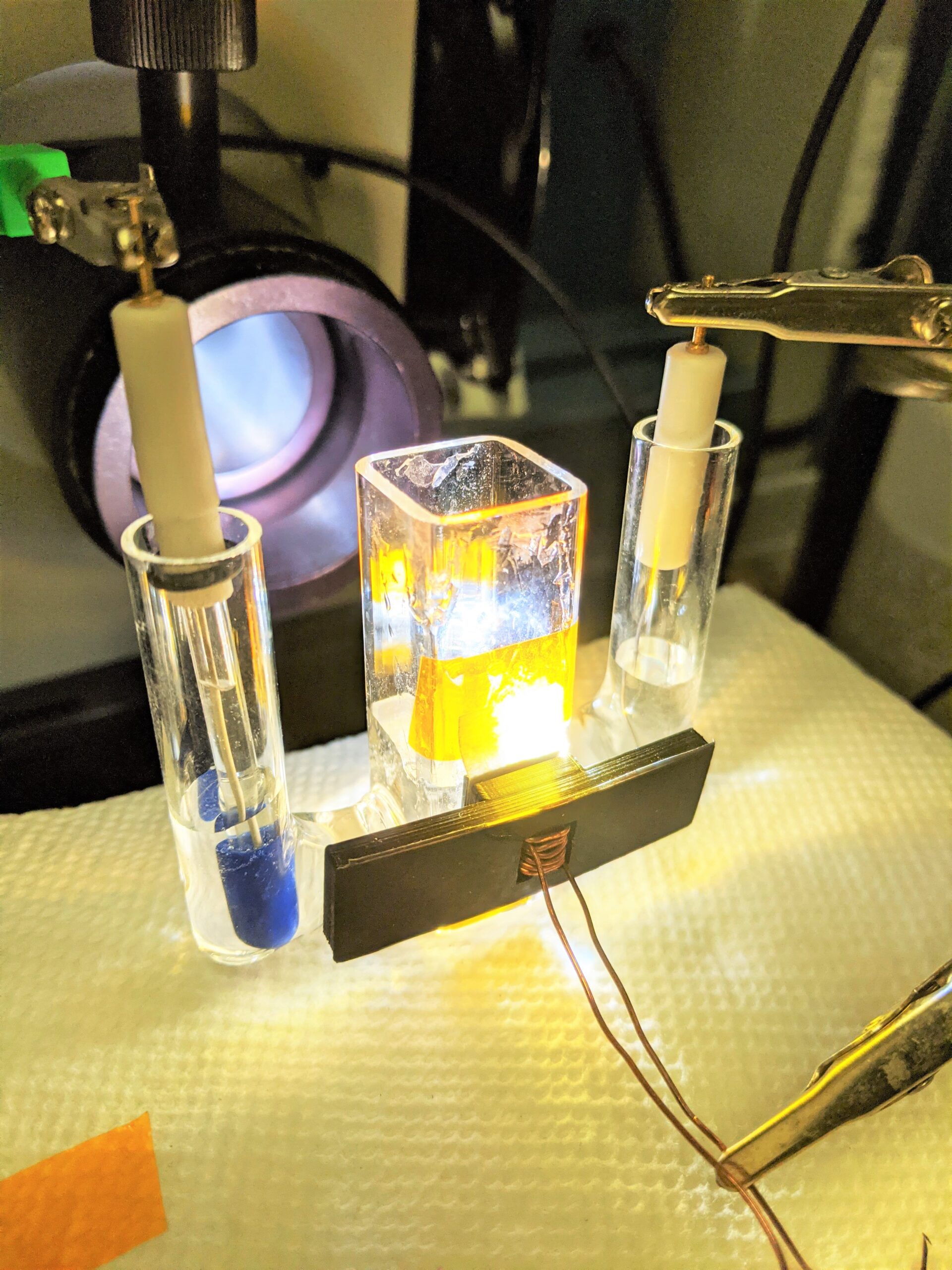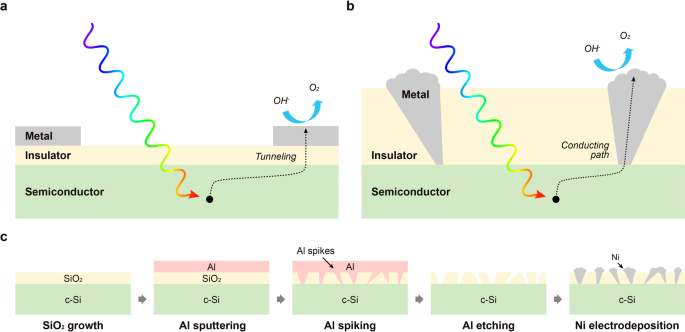2021-07-19 アメリカ合衆国・テキサス大学オースチン校(UT Austin)


・ UT Austin が、水素を生成する水電解の酸素発生反応(OER)フォトアノードの低コストでスケーラブルな製造技術を開発。
・ 蒸気やメタンの加熱による従来の水素の製造方法では、化石燃料を使用して CO2 を排出する。そのため、環境にさらに優しい技術による「グリーン水素」の生産が推進されており、水分解反応の簡素化はその取り組みの重要な一部。
・ 効率的な水電解には、太陽光を効率的に吸収しながら水電解反応の条件下で劣化しない材料が必要とされる。しかし、太陽光の吸収に優れた材料は水電解反応の条件下での安定性に欠け、逆に安定した材料では太陽光の吸収能力に乏しくなり、両特性の両立が困難。
・ 太陽光を効率的に吸収するシリコン(Si)と安定性を提供する二酸化シリコン(SiO2)の組み合わせにより両特性を確保できるが、SiO2 層での電荷輸送の問題が起こる。SiO2 層を数 nm 以下の薄さにすることでこの問題に対処できるが、Si 層を保護する効果が低減する。
・ 本研究では、厚みのある SiO2 層に導電経路を作製してこの問題を解決。SiO2 層をアルミニウム(Al)薄膜でコーティングした後、全体を加熱してナノスケールの Al スパイクのアレイを形成する。これらの Alスパイクは、水分解の触媒反応を引き起こすニッケル(Ni)等の材料で置き換えることができる。
・ 同デバイスに太陽光を照射すると効率的に水を酸化して酸素分子を形成し、もう一方の電極で水素を生成。長時間にわたり突出した安定性を示した。同デバイスは一般的な電子チップ製造技術で作製できるため、大量生産への容易なスケールアップが可能。
・ 今後は、反応速度の改善を通じて OER の効率性の向上を目指す。また、今回の技術を用いた、水素発生反応(HER)の課題の解決も試みる。
・ 同技術は、商業化に向け特許出願済み。本研究には、米国立科学財団(NSF)の Directorate for Engineering and the Materials Research Science and Engineering Centers (MRSEC)プログラムが資金を提供した。
URL: https://cockrell.utexas.edu/news/archive/9300-making-clean-hydrogen-is-hard-but-researchers-just-solved-a-major-hurdle
<NEDO海外技術情報より>
(関連情報)
Nature Communications 掲載論文(フルテキスト)
Scalable, highly stable Si-based metal-insulator-semiconductor photoanodes for water oxidation
fabricated using thin-film reactions and electrodeposition
URL: https://www.nature.com/articles/s41467-021-24229-y
Abstract
Metal-insulator-semiconductor (MIS) structures are widely used in Si-based solar water-splitting photoelectrodes to protect the Si layer from corrosion. Typically, there is a tradeoff between efficiency and stability when optimizing insulator thickness. Moreover, lithographic patterning is often required for fabricating MIS photoelectrodes. In this study, we demonstrate improved Si-based MIS photoanodes with thick insulating layers fabricated using thin-film reactions to create localized conduction paths through the insulator and electrodeposition to form metal catalyst islands. These fabrication approaches are low-cost and highly scalable, and yield MIS photoanodes with low onset potential, high saturation current density, and excellent stability. By combining this approach with a p+n-Si buried junction, further improved oxygen evolution reaction (OER) performance is achieved with an onset potential of 0.7 V versus reversible hydrogen electrode (RHE) and saturation current density of 32 mA/cm2 under simulated AM1.5G illumination. Moreover, in stability testing in 1 M KOH aqueous solution, a constant photocurrent density of ~22 mA/cm2 is maintained at 1.3 V versus RHE for 7 days.



